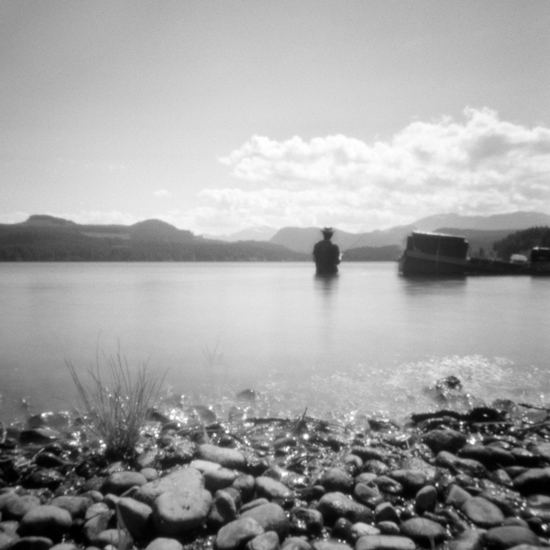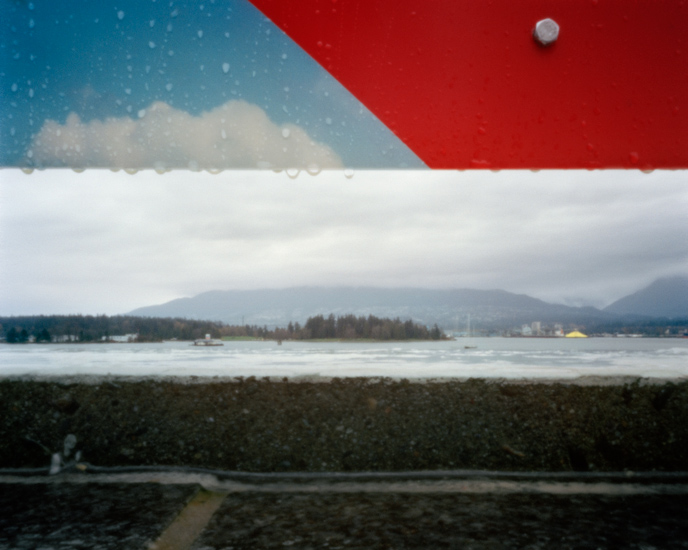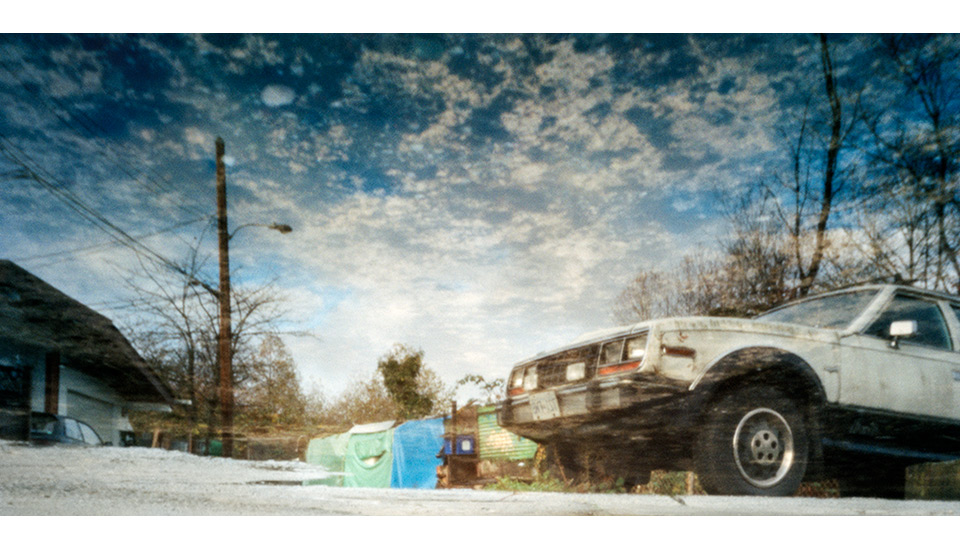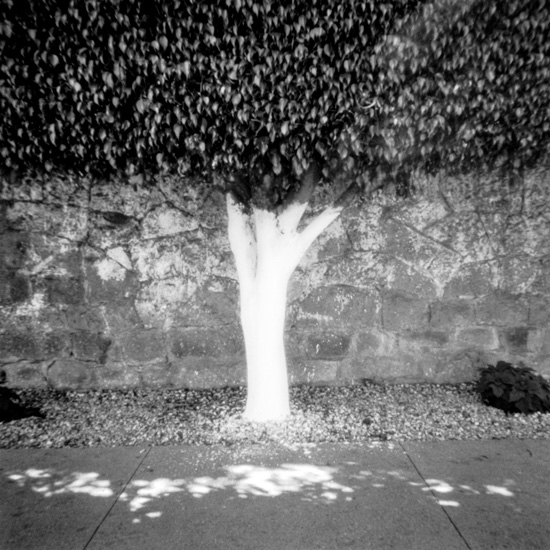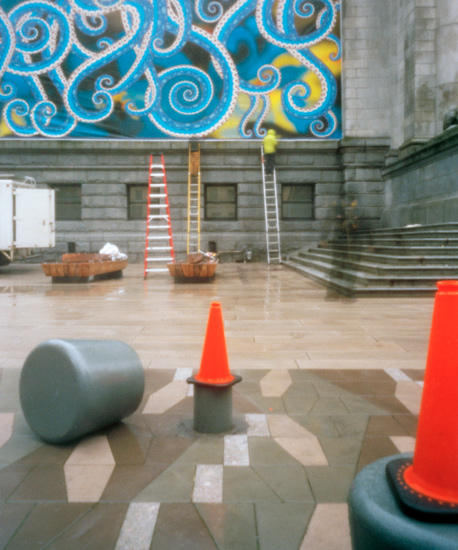Long exposure pinhole photographs, single shots
Most of this collection exemplifies my interest in landscape and place, particularly as an anchor for memory and mismemory. I moved a lot when I was a kid (and when raising my own kid) and location helps me track what happened and when. But places change all on their own and in relation to us. I’m thinking of that feeling I get when I return to a place I lived when I was little—it’s always different and much smaller too. When faced with these changes, I have to revise my idea of that site and sometimes that revision compromises (or recomposes) my memories of events that took place there. Memory, too, is an act of reconstruction—every time we remember, we rewrite it. So remembering is an analog process, of sorts, a quality that is shared by long exposure: as the film is exposed, the image is overwritten, creating blur, erasures, multiple exposures and other irregularities.
I am also interested in disorientation and absence as a strategy for unsettling viewers’ expectations of knowing a place or situation—of the urge to have a wide or clear view of a site. I’m trying to work with uncertainty, with not having that sense of control or mastery over a place. Perhaps confusion and disorientation can help us rethink what we know about a place, about who is missing, who may not have access to it, who has been removed, and what has happened here. All of the sites I have photographed are colonized places and many of them in the process of gentrification. To be clear, I don’t claim this work as specifically decolonial, but I have been influenced by notions of unsettling certainty/mastery from Indigenous, anti-racist and Holocaust studies and I think it is an important lens to apply to representations of places, especially landscape.
You can view some of my digital landscape work on my Instagram channel.
Some of this work is available for purchase. Contact me to inquire.

